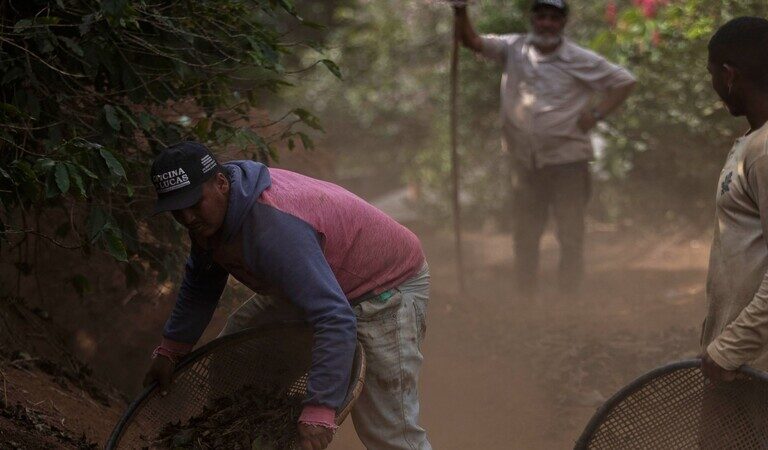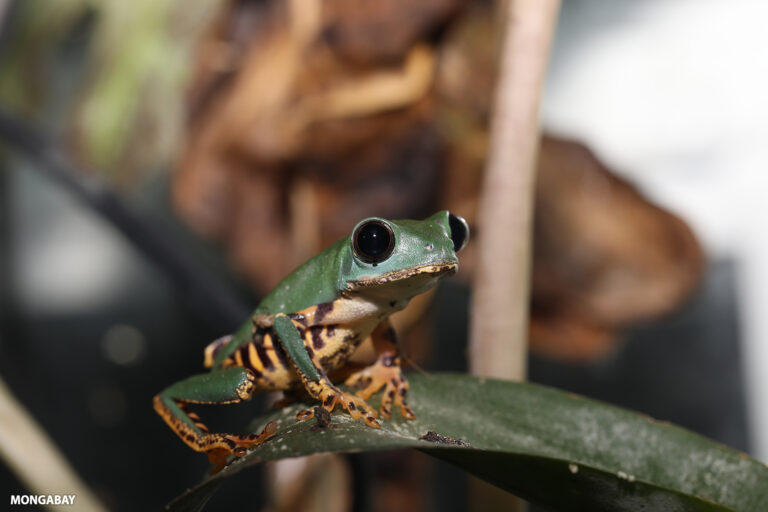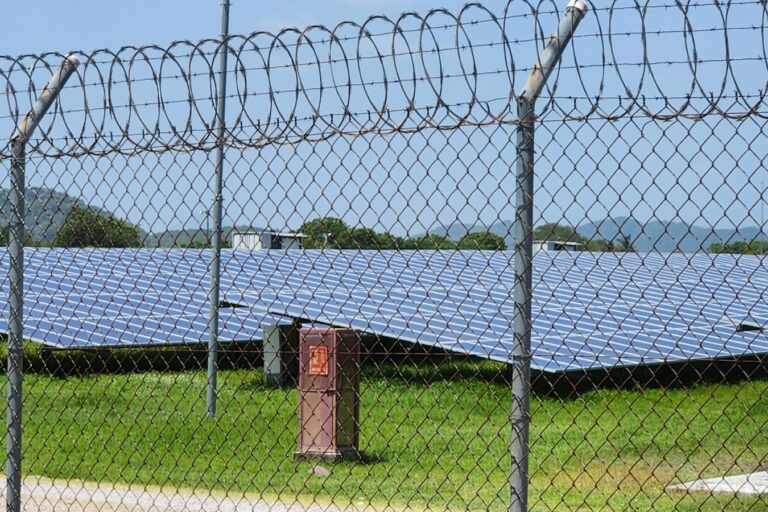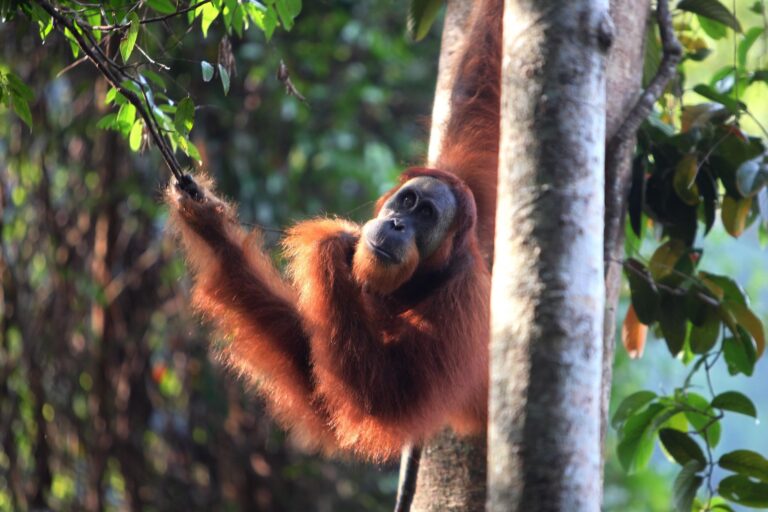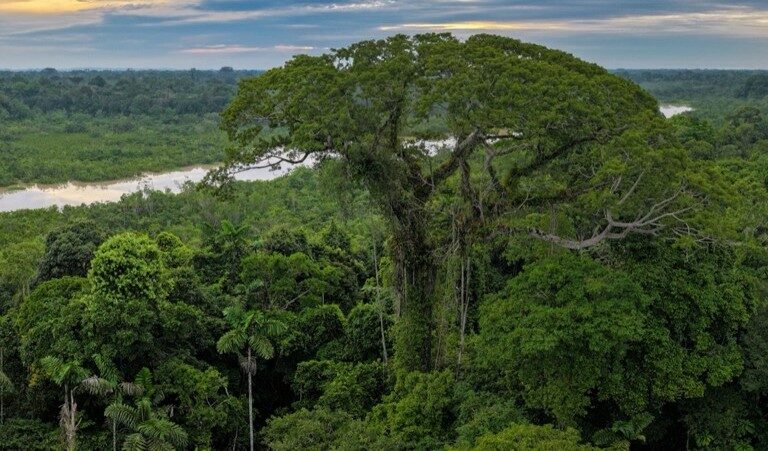- Researchers have discovered a secret population of spectacled bears in a remnant, endangered forest in the highlands of Bolivia.
- The forest is one of the last surviving patches of the highly imperilled inter-Andean dry forest.
- While the spectacled bear population is small and has many threats, researchers say they hope to connect it with other populations.
EL PALMAR, Bolivia — It was worth the journey. After sweating across the scrubby Bolivian mountainsides, stepping into the forest was like entering a different world. Twisted pino de monte pines trailed ghostly green-gray lichens into our faces. Ferns and, much to my surprise, moss sprung from the cracks in the bark and the little nooks where the branches met the trunks. The temperature seemed to drop by at least 10 degrees.
But it was more than just the break from the heat; my eyes greedily drunk in the sight of so much green and so many complex textures, after miles of looking at dry soils and sparse, thorny bushes. This place, high in the Bolivian Andes, looked like it held ancient secrets — and my traveling companion, Mauricio Peñaranda del Carpio, a biologist at Universidad Francisco Xavier de Chuquisaca and the Cohabitar Foundation, confirmed it.
We were on our way to one such wonder: the “Bath of the Condors,” a cliff that trapped small pools of water where Andean condors (Vultur gryphus) came to bathe. We saw seven condors that day, soaring like flying doors as they stretched out their immense wings. That was, according to Peñaranda, a bad day: on a good day, you could see 70. But Peñaranda, who had invited me to El Palmar, was not here for the condors.
He was here for the bears.

Hidden treasure
The most endangered forests in the world are not the ones that make the headlines. They are the ones cut down so long ago hardly anyone knows that a few patches still exist — or the treasures they contain.
Despite being just a few hours’ drive from Sucre, the judicial capital of Bolivia, El Palmar Integrated Management Natural Area is visited by an average of just one tourist a day — and that was before COVID-19. Few people know that this protected area contains some of the best-preserved remnants of a forest that once covered much of the inter-Andean valleys. But in these forgotten forests, Peñaranda recently discovered something wonderful: a small population of Andean spectacled bears (Tremarctos ornatus).
“What is remarkable about this record of the Palmar bears,” he told Mongabay, “is that it leads us to think that it is a remnant population of what was once a wider distribution of the animal in this type of ecosystem. At the same time, it shows us the fragility of this species [to habitat destruction].”
The inter-Andean dry forests once covered swaths of the landscapes at elevations of 500-3,300 meters (1,640 -10,800 feet) in Bolivia and, to a lesser extent, Peru, which often have a relatively dry climate due to the “rain shadow” effect of the higher Andean peaks. The microclimate here can vary dramatically from valley to valley, and with it the tree species; but these diverse forests would once have covered about 4% of what is now Bolivia.
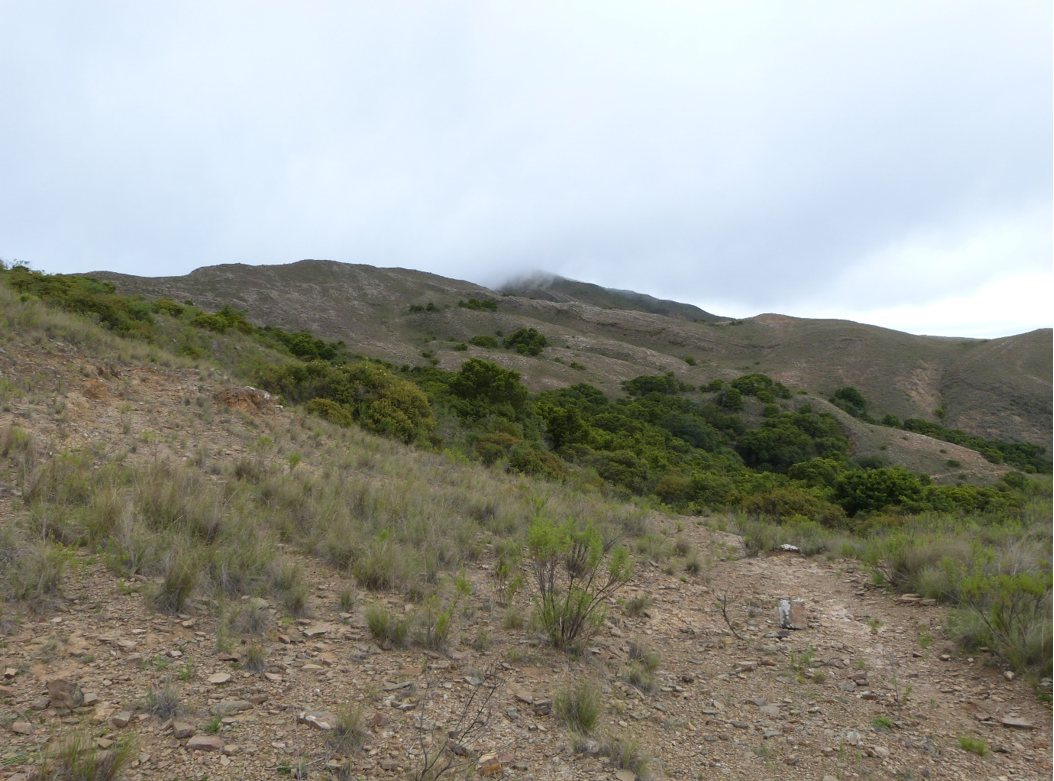
On the trail of the jucumari
Peñaranda didn’t set out to look for bears. He first went to El Palmar, an integrated management area where people live and farm within the park borders, in search of puma (Puma concolor). Looking for ways to help people coexist with the big cats, he interviewed locals. As an afterthought, he asked them if they’d ever had problems with bears.

The Andean or spectacled bear, called jucumari in the Quechua-speaking area of El Palmar, was rumored to live in the protected area — but these rumours hadn’t reached the ears of many scientists. Even a map of the historic range of the bears didn’t place them in the park. The spectacled bear is South America’s only living bear species, and is listed by the IUCN Red List as vulnerable and in decline.
But when several respondents, along with some of the experienced park guards, told Peñaranda they’d seen a bear, he was keen to investigate. In a stroke of luck, one of his camera traps set up for pumas snapped a bear.
“The word that would express what I felt … would be joy. For a long time people told us about the bear on the site … but seeing the photo was different,” Peñaranda said. “We were all very happy.”
Even better news: the bear was a female, and she had a cub by her side.
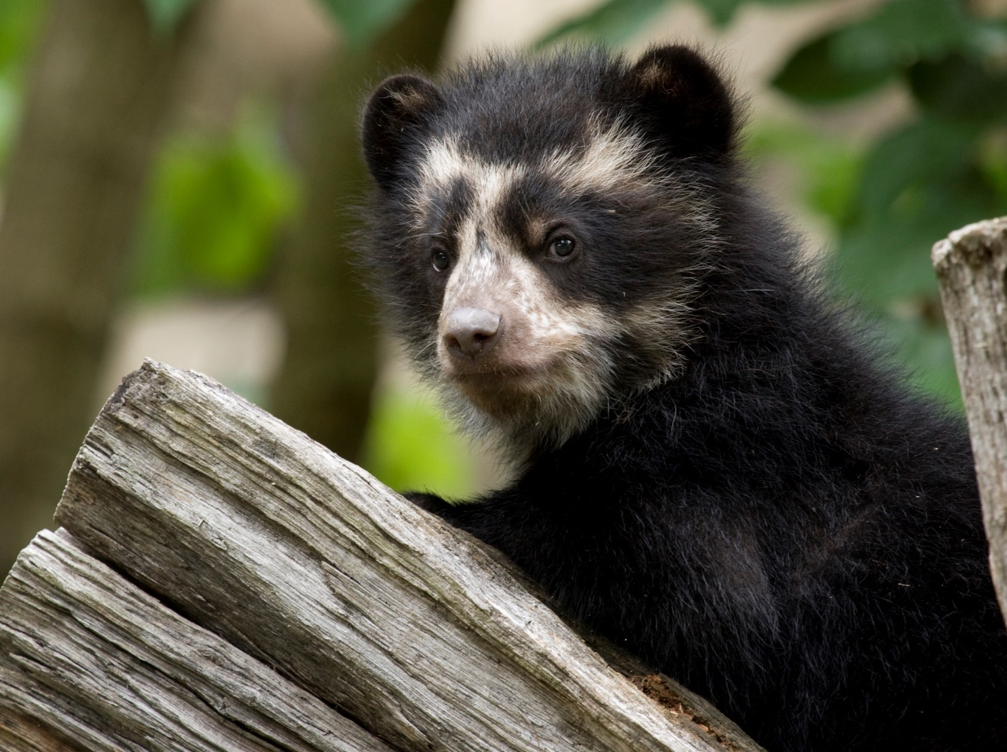
Lone survivors
The spectacled bear is the lone survivor of the short-faced bears, the other members of which went extinct around 10,000-12,000 years ago, possibly due to some combination of a changing climate and hunting by newly arrived humans. With the extinction of their larger cousins, spectacled bears became the largest surviving carnivores in South America. However, meat comprises only about 5% of their diet.
Found down the spine of the Andes from Venezuela to Bolivia, spectacled bears are threatened by all the usual suspects: habitat loss and fragmentation, expanding infrastructure, climate change, and poaching. They may be hard to find, but this hasn’t stopped them from coming into conflict with people.
As deforestation and climate change make life harder for them, bears increasingly search for food around human settlements, where they devour fields of maize and sometimes kill livestock. In places like El Palmar, where farmers with few resources are also feeling the impacts of climate change, even a small loss can be devastating. While it’s not clear if bears really kill as many sheep and cows as people think they do, there have been several well-documented cases of people killing bears.
On this trip, I didn’t have time to search for the Palmar bears — it would take almost a week to walk to the best bear spots and back. But it was still exciting to walk in the forests, see the condors wheel overhead, and know that the bears were out there.
Peñaranda’s discovery of a secret bear population — separated from their official distribution zone by 100 kilometers (60 miles) of inhospitable scrub and farmland — immediately raises new questions. How many bears live here? Do they ever mix with bears in other areas? And could the population, living in the scattered forest patches conserved in the 500-square-kilometer (193-square-mile) park, persist in the long term?
Jucumari and janch’icoco
El Palmar wasn’t set up to protect large carnivores. The clue is in the name: it’s protected for palm trees, specifically the endangered janch’icoco palm (Parajubaea torallyi), found only in Bolivia.
Janch’icoco palms are an oddity. They grow between altitudes of 2,400 and 3,400 m (7,800 and 11,150 ft). Yet even in tropical Bolivia, these altitudes are too cold in winter for most palms. Nobody knows where they come from, or how they got to El Palmar: theories include that they were planted by the Palaeo-Amerindian people, or transported by bears.
Whether people or bears brought the palms to the windswept slopes of El Palmar, they both enjoy them now. Peñaranda said people are allowed to use the palms sustainably, and this was much in evidence.
Flopping into the shade of the park office after a sweaty hike, we were immediately approached by an enterprising woman with a large bucket of orchata, a drink made from janch’icoco nuts, water and cinnamon. Once sufficiently refreshed, she sold us the rest of her wares: pretty baskets and pots neatly woven from palm fibers. Even the roofs of many houses were thatched with palm fronds.

As well as being a blessing for locals, palms may also be the reason behind the bears’ survival in these relatively small forests.
One of Peñaranda’s undergraduate students, Daniela Díaz, has recently studied bear droppings in El Palmar. She found that 87% of their diet was made up of the protein-, fat- and nutrient-rich janch’icoco nuts, with the rest comprised of bromeliads and other plants. Peñaranda said that perhaps having such a rich and plentiful food source helped the bears to survive here, even as they disappeared in so many other places.
But not many remain.
“Andean bears have markings around the eyes, nose and neck that are unique to each individual,” Peñaranda said. “Through photos and videos, we have identified at least 10 different individuals, although we assume that there are more.”
Peñaranda estimated the total bear population in El Palmar at less than 20. He said the spectacled bear is mainly distributed in humid forests, and it is rare to find it in dry forests such as those of El Palmar.
“I think that [spectacled bears] used to have a wider distribution that included a large part of the dry inter-Andean valleys. But I don’t think it was ever the preferred habitat for this species,” he said. “It is likely that the density of the Andean bear in the dry valleys was never very high.”
Learning that bears live in El Palmar could help scientists better understand the ecosystems and wildlife that once covered much greater areas of the mid-elevation Andes.
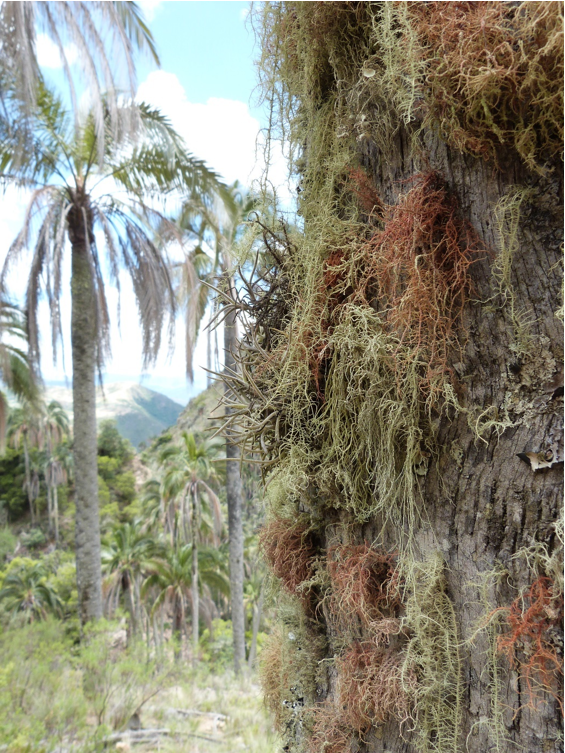
Forgotten forests
People have lived in the Andes for at least 9,000 years. Surviving in these immense mountainous landscapes with their extreme weather conditions and high altitudes has probably never been easy. People cut trees for firewood, grazed herds of livestock, and cleared land to grow crops. Over millennia, the forests and bears gave way to scrublands, goats, and thirsty fields, with the result that inter-Andean dry forests are now critically endangered in Bolivia.
The forests appear to be victims of shifting baseline syndrome, having been deforested or degraded so long ago that most people don’t know what the landscape looked like before. Inter-Andean dry forests are more threatened than rainforest; only a few areas are still considered in “good” condition. In many places you’re more likely to find fast-growing exotics like eucalyptus and pines, planted to stabilize the eroding slopes, than native trees.

A 2017 report by the Center for International Forestry Research (CIFOR) found that while Colombia had started or planned at least 100 projects to restore its inter-Andean forests, Bolivia, a far poorer country, only had a handful.
CIFOR points out that restoring these forests is not just important for wildlife: it could help recover soil fertility, control erosion, provide wood, fruit and nuts to people, as well as regulate and clean water. Tree roots help water absorb into the soil and trickle through to streams slowly, instead of running off the surface and causing a flash flood followed by drought.

You don’t need to be a scientist to realize the benefits of forests in these landscapes. A local man, who asked to remain anonymous, told me how keen he was to see more native forests in El Palmar. As we walked in the forest, he showed me a pipe carrying water to a tank in the valley below.
“There’s always clean water here, under the trees,” he said, “but out there it rains and the water is gone quickly.”
He said that both deforestation and climate change are making El Palmar drier, and making it even harder for people to grow what they need.
“Deforestation causes loss of soil and drought year after year. The planting is minimal, just exotic pines along the roadside, and there’s no reforestation with native plants,” he said.

Hope for the bears
When I visited El Palmar, Peñaranda was concerned about the small size of the bear population.
“I don’t know how long they can persist without mixing with other populations,” he said as we hiked. “They’re almost certainly inbreeding, and that’s not good.”
But he recently contacted me with good news.
“Where we saw condors — a place where people have never seen bears before — an individual [bear) appeared a week after our visit,” he told me, “and just today I learned of a record of Andean bears less than 30 kilometers [19 mi] away. If I can confirm this, it’s a good place to start connecting small Andean bear populations in the dry forests.”
The path ahead is far from easy. Peñaranda said he wants to radio-collar the spectacled bears to understand their movements, find ways to reduce conflicts between bears and people, and get the funds and permission to plant forests connecting the isolated populations. There’s a lot to be done. But the latest news provides hope that the bears in El Palmar may not be as lonely as they seem.
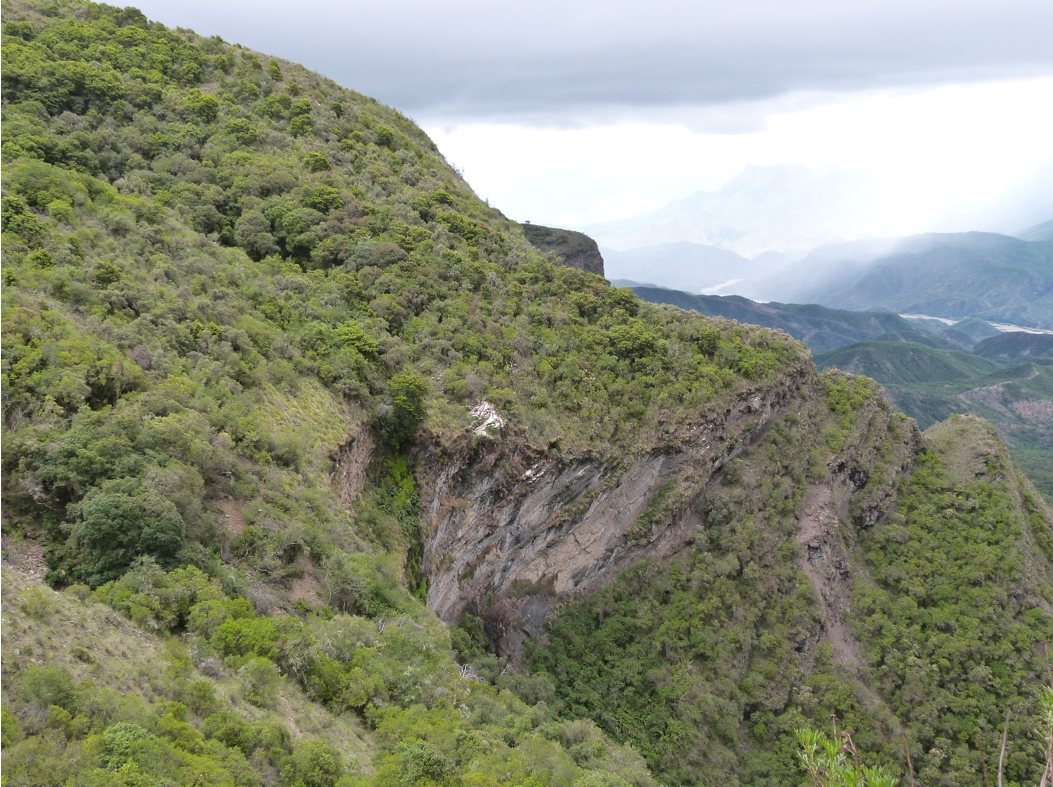
Banner image: Andean bear. Photo: Emmanuel Keller
Citations:
Ibisch, P. L., & Mérida, G. (2003). Biodiversidad: La riqueza de Bolivia Estado de conocimiento y conservación. Ministerio de Desarrollo Sostenible Viceministerio de Medio Ambiente y Recursos Naturales Dirección General de Biodiversidad. FAN, Santa Cruz de la Sierra, Bolivia.
Lindo, J., Haas, R., Hofman, C., Apata, M., Moraga, M., Verdugo, R. A., … Di Rienzo, A. (2018). The genetic prehistory of the Andean highlands 7000 years BP though European contact. Science Advances, 4(11), eaau4921. doi:10.1126/sciadv.aau4921
Murcia, C., Guariguata, M. R., Peralvo, M., & Gálmez, V. (2017). La restauración de bosques andinos tropicales: Avances, desafíos y perspectivas del futuro. CIFOR. doi:10.17528/cifor/006524
Olson, D. M., & Dinerstein, E. (1998). The Global 200: a representation approach to conserving the Earth’s most biologically valuable ecoregions. Conservation Biology, 12(3), 502-515. doi:10.1046/j.1523-1739.1998.012003502.x
Tovar, C., Arnillas, C. A., Cuesta, F., & Buytaert, W. (2013). Diverging responses of tropical Andean biomes under future climate conditions. PLOS ONE, 8(5), e63634. doi:10.1371/journal.pone.0063634
Wallace, R. B., Reinaga, A., Siles, T. M., Baiker, J. R., Goldstein, I., Ríos-Uzeda, B., … Vela, H. (2014). Andean bear priority conservation units in Bolivia & Peru. Wildlife Conservation Society, Centro de Biodiversidad y Genética de la Universidad Mayor de San Simón de Bolivia, Universidad Cayetano Heredia de Perú & Antwerp University. La Paz, Bolivia.
Moraes, R. M., Roncal, J., & Hurtado, R. (2017). Uses of Parajubaea torallyi, a vulnerable palm of Bolivia. Palms, 61(2), 91-101. Retrieved from https://www.cabdirect.org/cabdirect/abstract/20173215746






